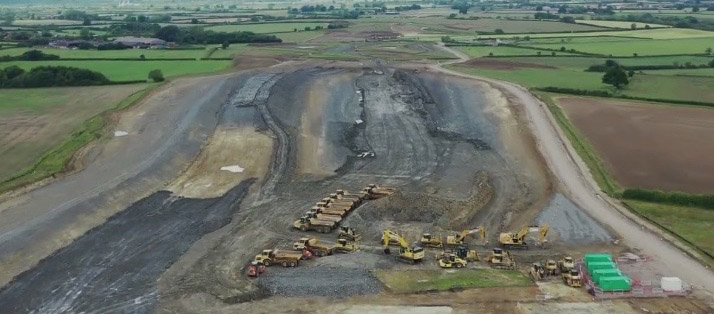The Gates to Forgotten Metro-Land
In amongst the stock of ironwork at LASSCO Three Pigeons we have a utilitarian pair of iron gates for sale. We removed them from the yard at Verney Junction Station in rural Buckinghamshire. It is now a private house but still with an overgrown railway platform at the back. The small station, in a tiny hamlet, has a story to tell – it was once the intended culmination of Metropolitan grand schemes – schemes that were never fully realised. Today it is enveloped in a much greater upheaval.
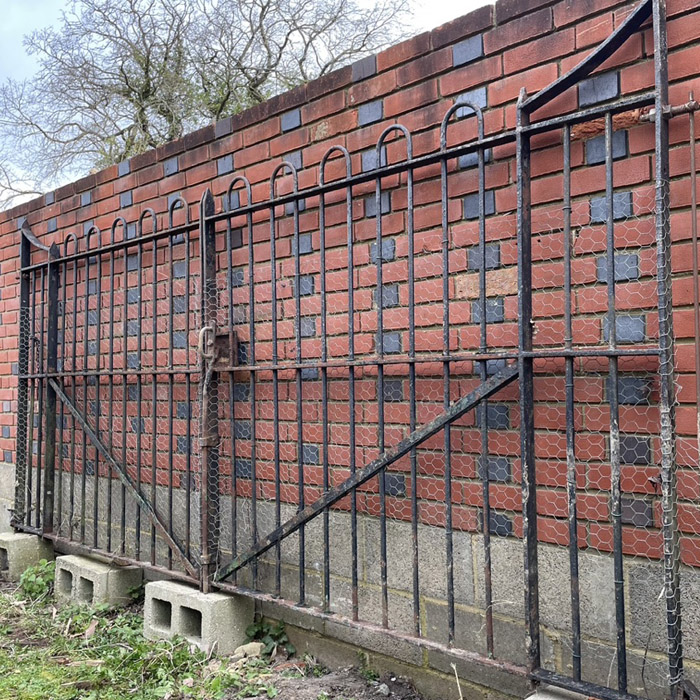
The first screening of “Metro-Land”, Sir John Betjeman’s poignant meditation on suburbia was exactly 50 years ago: 26th February 1973. He used the Metropolitan Line as the narrative vehicle for his 50minute film, setting off from Marylebone out to the Chilterns, stopping off along the way. At the end of the film he’s seen standing on the footbridge at Verney Junction Station and surveys the view of the rolling farmland and the grassed-over trackbed below. He explains that The Metropolitan Line, as built, had had far greater ambitions for its commuters than just Amersham down the tracks to the south-east where, in 1948, the tube service had reached – but opted to terminate:
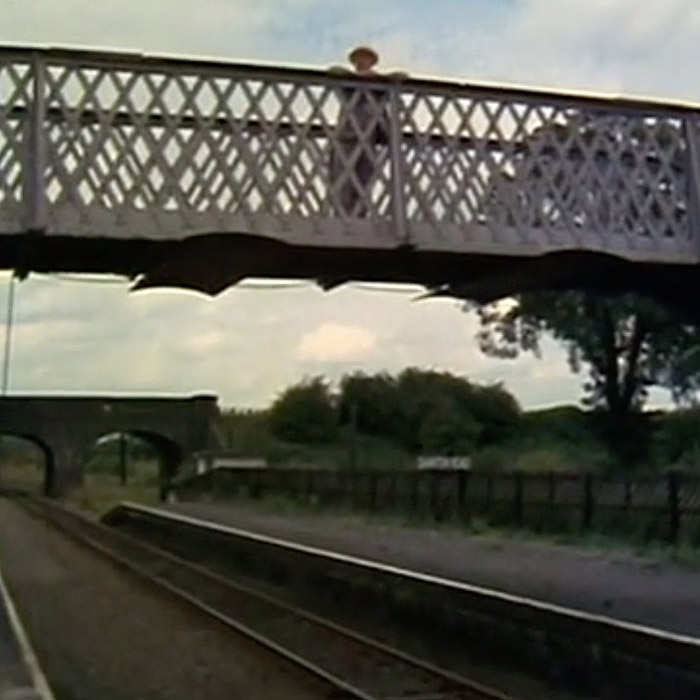
“Steam took us onwards
through the ripening fields,
ripe for development,
where the landscape yields
clay for warm brick,
timber for post and rail,
through Amersham to Aylesbury and the Vale.”…
“In those wet fields,
the railway didn’t pay.
The Metro stops at Amersham today.”
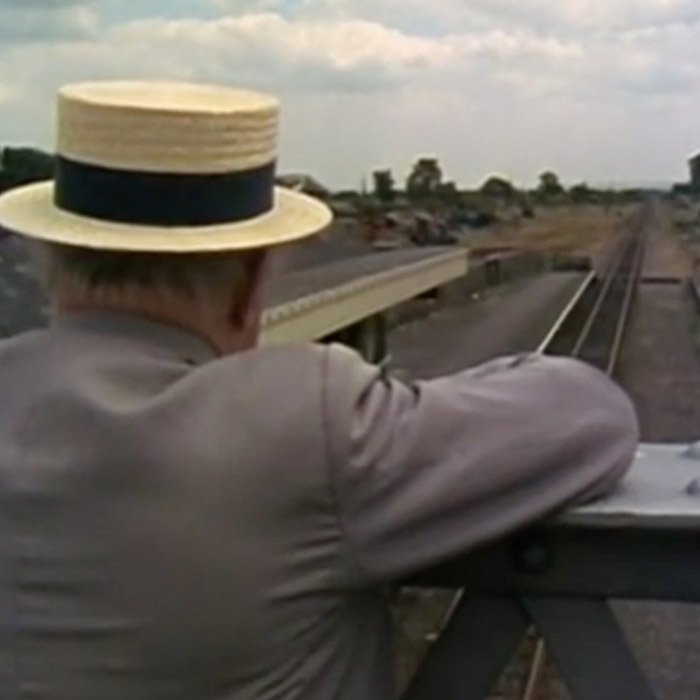
Throughout his film Betjeman drifts in and out of verse, he concludes:
“This is a part of the Metropolitan Railway that’s been entirely forgotten.
Beyond Aylesbury it lies
in flat fields
with huge elms
and distant blue hills…
It was to have been the Clapham Junction of the rural part of the Metropolitan.
With what hopes this place was built in 1890!
They hoped that trains would run down the main line there [points]
from London to the Midlands and the North.
They’d come from the Midlands and the North, rushing through here [awkwardly sweeps his arm] to London and a “Channel Tunnel”, and then on to Paris.
But, alas, all that’s happened
is that there [points]…
a line curves away to the last of the Metropolitan stations in the country,
in far Buckinghamshire, which was at Verney Junction.
The houses of Metro-Land never got as far as Verney Junction.
Grass triumphs.
And I must say I’m rather glad.”
And there the film ends.
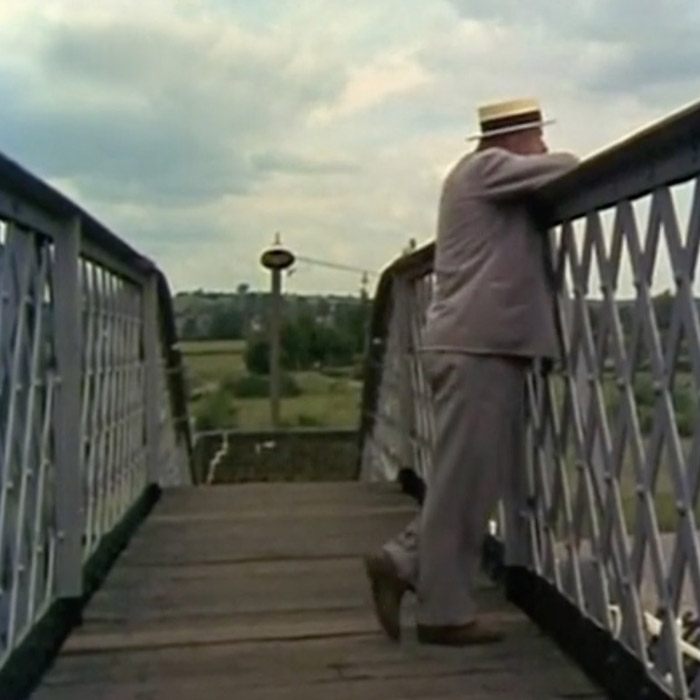
If the full extent of the Metropolitan Line service had been realised, Verney Junction would doubtless be a sizeable town today. From the station’s opening, in 1897, local train services did run to Verney Junction but passenger trains only came until 1936. The track was lifted after 1956, pre-Beecham even, when goods services had also ceased.
Betjeman was clearly uncomfortable with the thought that the sprawl of Metro-Land was to have come this far and what it would have inflicted on the verdant Aylesbury Vale. However, a couple of years ago major change did arrive. Betjeman’s triumphant grass has been dug up.
First, hammered post-markers, sprang up in the countryside. Then came Heras fencing, enclosing new empty remote car parks. And then, curiously, lone figures clad in hi-vis orange would be employed to stand in successive fields – across the Vale, south to north – for miles. Chainsaws followed as swathes of woodland were cleared. At a certain tipping-point the large machinery was deployed. From Missenden to Stone to Waddesdon to Quainton and onwards, each field was gifted a brace of large, idling, yellow diggers. And daily, ever more hi-vis orange clad workers gathered in small clusters behind the hedges. When all was in position, they tore up the fields.
The building of HS2 is a monumental undertaking. From London it tunnels through the Chilterns and emerges near Wendover. From high up on the Ridgeway, near Chequers, you can see the scar of the works threading northwards for miles. It drops into the Vale with Stoke Mandeville to its right, it truncates the ancient park of Hartwell House and on across the fields past Aylesbury. A 50km long temporary access road has now been built along the course of the new railway to cope with the construction traffic.
This summer [2023] the big earthmoving gets underway: 30million tons of embankments and cuttings are to be dug on this stretch alone.
Verney Junction Station is just off the path of the carnage, it will survive it (unlike the old church at Stoke Mandeville which was flattened), but it is directly in the path of another welt that crosses it: a seemingly similar scale of construction at the back fence, running along the crumbling old platform edge. Here is the construction of the East-West Railway to link Oxford and Cambridge (arguably a far more worthy project than HS2). The two lines intersect up the road. East-West flys over HS2. But, like the Metropolitan Line, neither will stop at Verney Junction Station. The trains will hurtle past.
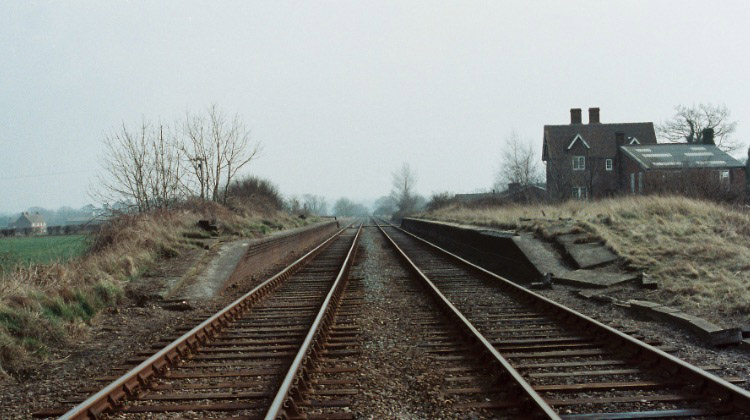
From today the gates of Verney Junction Station can be found on our website here exactly 50years since Sir John Betjeman came tottering through them with his production crew in tow.
